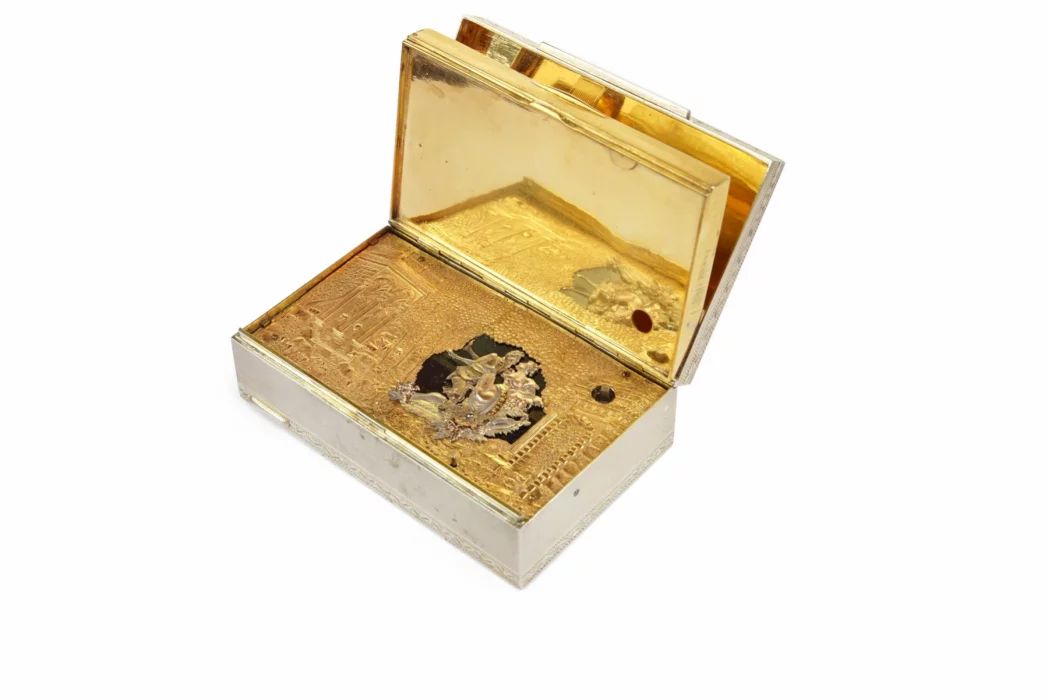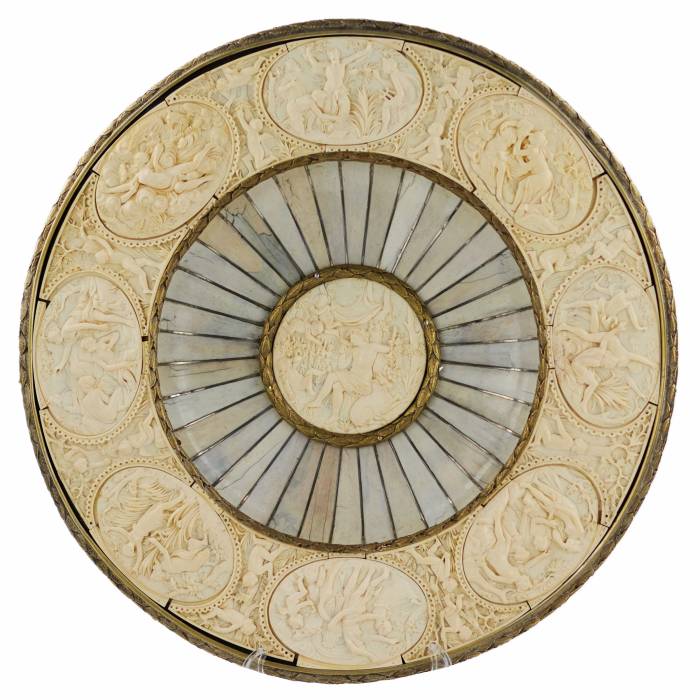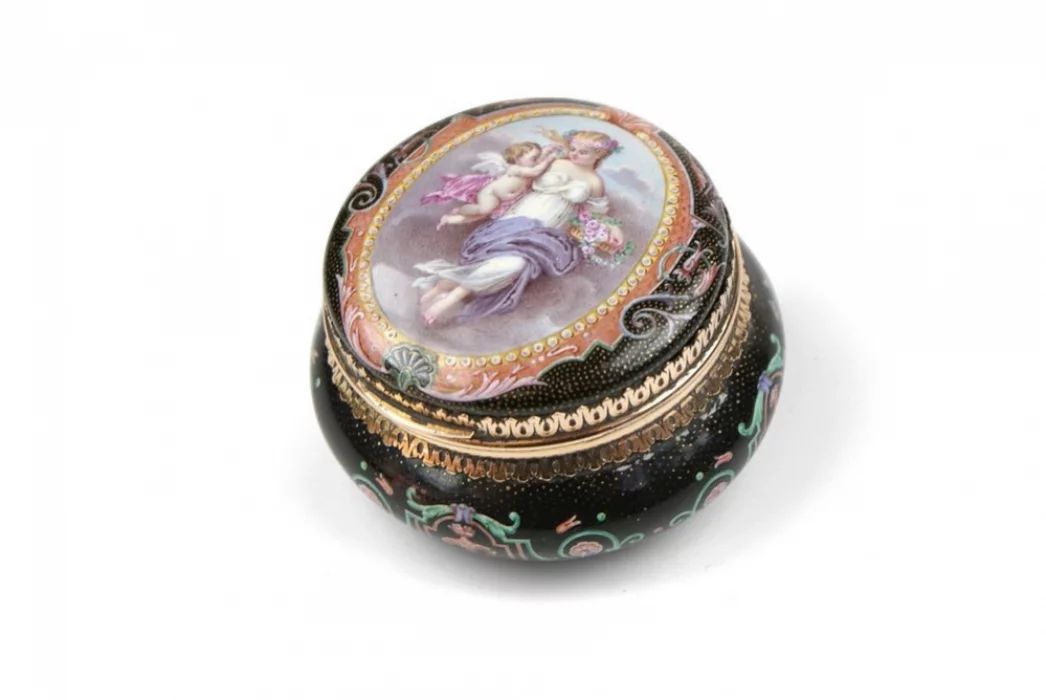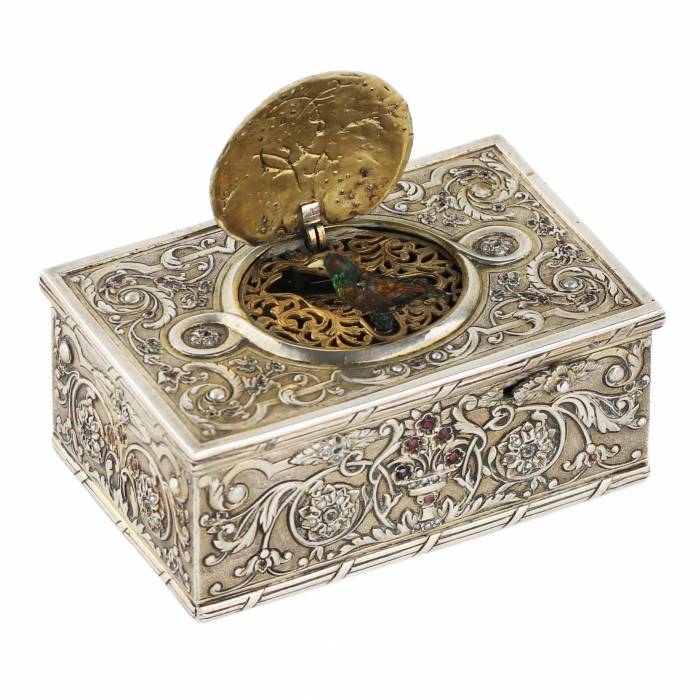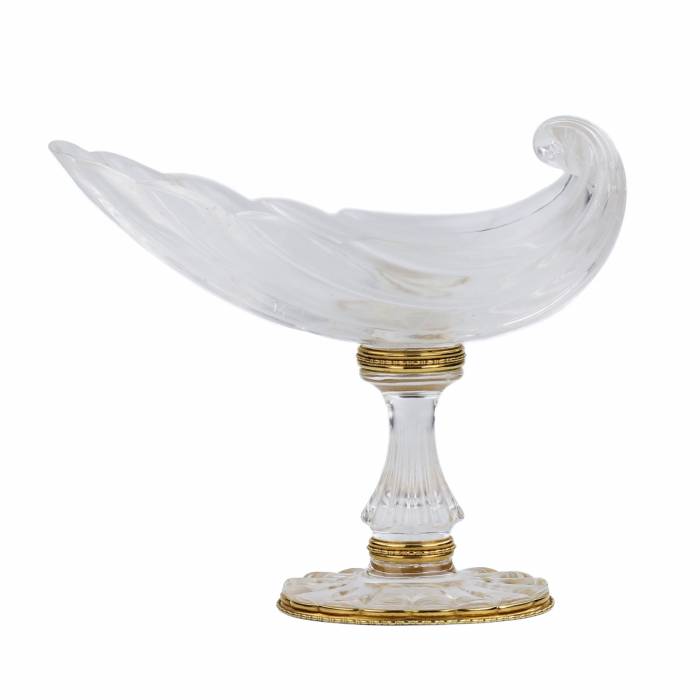
AntiqonART consultant will contact you within one business day after receiving your request.




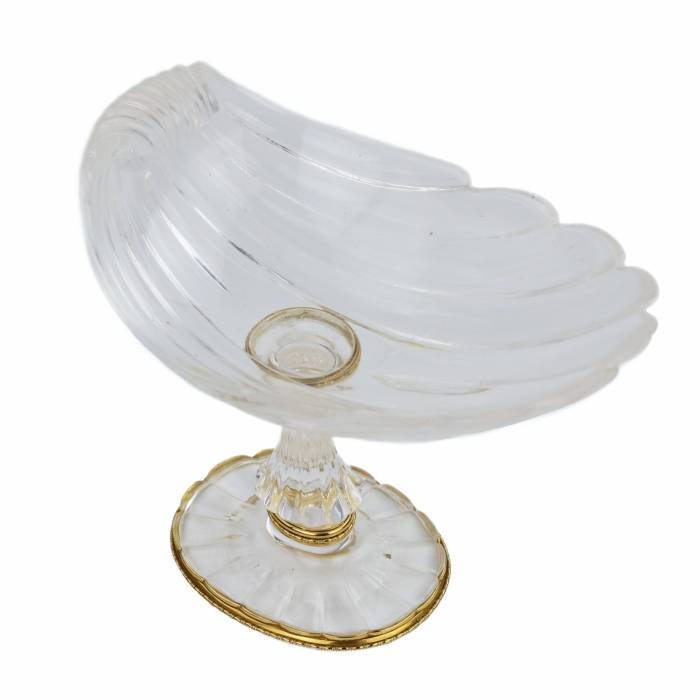




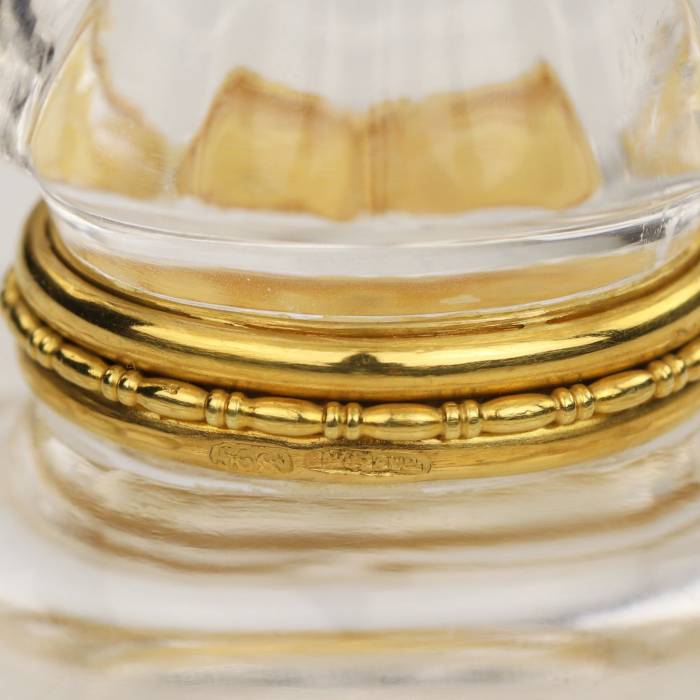










At Antiqon ART, we build trust and value your choice. Every purchase of art and antiques with us is an investment backed by our expertise, reputation, and a 100% authenticity guarantee.
Discover how the value of similar works has evolved over the past 10 years. Art is not only beauty — it's an investment.
Antiqon ART offers free packaging, insurance, and delivery for most items purchased through the company. Exceptions include large and oversized items that require specialized packing and shipping.
The vessel is set on an oval foot made of the same crystal, resting on a decorative openwork base with gold accents. The mount is crafted in 14K gold (585 standard), adorned with a typical Fabergé frieze of stylized oval pearl motifs, emphasizing the piece’s connection to the firms highest goldsmith traditions. This refined interplay of material, form, and technique demonstrates the exceptional artistic and technical level of execution.
Marks: 56 gold standard (14K); Saint Petersburg assay office mark – a woman’s head in kokoshnik facing right; Cyrillic ФАБЕРЖЕ (FABERGÉ) in an oval, corresponding to items produced by the Saint Petersburg branch of Fabergé between 1882 and 1899.
Dimensions:Height – 14.5 cmBowl – 16.5 × 10 cm
Weight: 464 g
Materials: Rock crystal, 14K gold (585 standard)
Condition: Excellent museum condition
Provenance: Collection of Countess Fink von Finkenstein-Brinckam
This development was largely enabled through collaboration with Karl Fyodorovich Werfel, a talented stone-carver and owner of a bronze-cutting factory, who became a Supplier to the Imperial Court in 1895. Werfel held monopolistic rights to jade mining in Siberia and access to the finest varieties of rare minerals, including iridescent agates and smoky quartz. His workshop was known for precision carving and flawless execution, forming an ideal partnership with Fabergé’s jewelry ateliers.
Fabergés stone-cutting creations, produced in conjunction with Werfel, were highly sought after by European aristocracy and the Russian imperial family. Their elegant organic forms and the pairing of noble materials made such pieces worthy of palace interiors and collectors cabinets.
This bowl gains particular historical significance from its provenance: it belonged to Countess Fink von Finkenstein-Brinckam, a member of one of the oldest noble families of Prussia, documented since the 13th century. The von Finkenstein family held high-ranking positions at the royal court, including chancellors and governors of East Prussia. A prominent art patron and connoisseur, Countess Fink von Finkenstein-Brinckam was part of the European aristocracy whose taste shaped the art market of the early 20th century. Her collection was renowned for its refined selection of imperial Russian works, acquired from leading auction houses and court suppliers. This bowl thus stands as both a jewelry masterpiece and a culturally significant artefact with noble European provenance.
The piece is preserved in exceptional museum condition. Natural horizontal bands typical of rock crystal, known as “curtains,” are visible inside the bowl, confirming the authenticity of the material. No signs of restoration, chips, or cracks were observed.
The condition report is provided for informational purposes only.
It is not comprehensive and may not reflect all defects, restorations, alterations, or adaptations, as Antiqon does not perform professional conservation-level assessments. The information is based on a qualified, yet subjective, evaluation by our specialists.Before purchasing, we recommend consultation with an independent expert.Please also consult our Terms and conditions and Glossary A-Z, which contain important information on lot characteristics and sale conditions.

Thank you for your request!
Our consultant will contact you soon.

AntiqonART consultant will contact you within one business day after receiving your request.
Thank you for your request!
Our consultant will contact you soon.

AntiqonART consultant will contact you within one business day after receiving your request.












